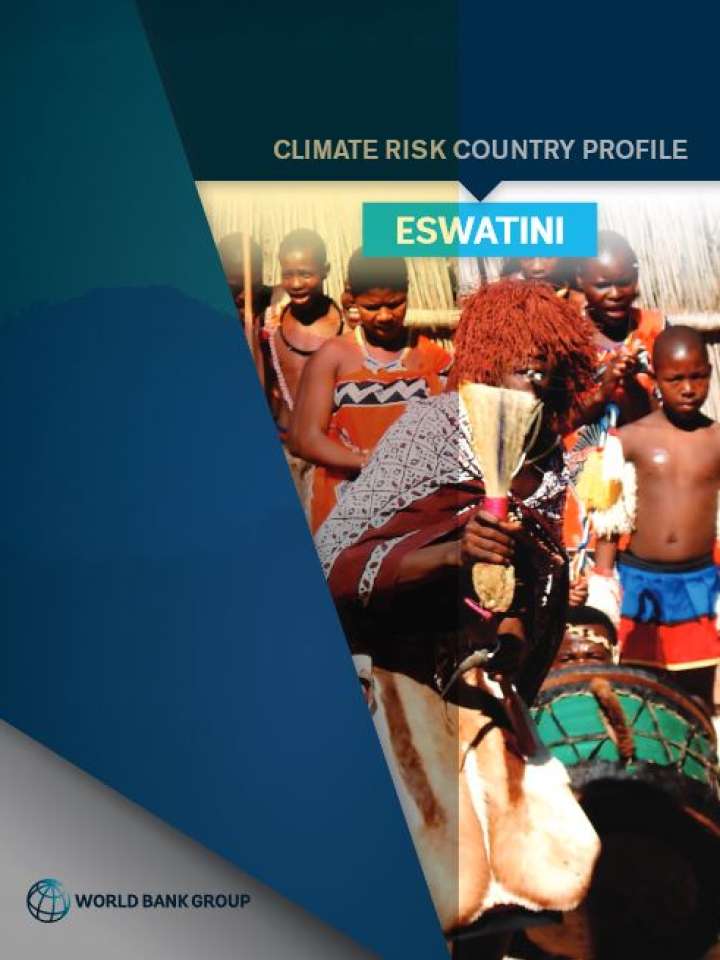Climate risk country profile: Eswatini
This climate risk profiles is intended to serve as a public good to facilitate upstream country diagnostics, policy dialogue, and strategic planning by providing comprehensive overviews of trends and projected changes in key climate parameters, sector-specific implications, relevant policies and programs, adaptation priorities and opportunities for further actions. The Kingdom of eSwatini (formally Swaziland), herein referred to as eSwatini, is a landlocked, and mountainous country situated in the south eastern part of the African continent. The country’s adaptation strategies to climate change have been identified in its Third National Communication (TNC) to the UNFCC (2016) and its Nationally Determined Contributions (NDC) submitted in 2016. eSwatini has identified four key sectors at risk to climate change which have been prioritized in adaptation strategies: agriculture, water, biodiversity and ecosystems, and health.
eSwatini is at high risk of natural hazards, which are expected to primarily affect the agricultural sector, through seasonal flooding and periods of drought. The country experiences natural hazards, such as violent storms and persistence drought, which is further exacerbating the country’s existing challenges of food insecurity, ability to attain development goals. In eSwatini, both minimum and maximum temperatures are projected to increase through the 2090s and temperature is expected to rise by as much as 1.9°C by the 2050s, under an RCP8.5 scenario. Hot Days are expected to rise by as many as 24.4 days by the 2050s. Temperature is expected to increase year-round, with peaks felt in the hottest period of October to December, under RCP8.5.23 Projections also indicate a decrease in cold days and nights, which is expected to have harmful impacts on eSwatini’s agriculture and livestock productivity.
Explore further
